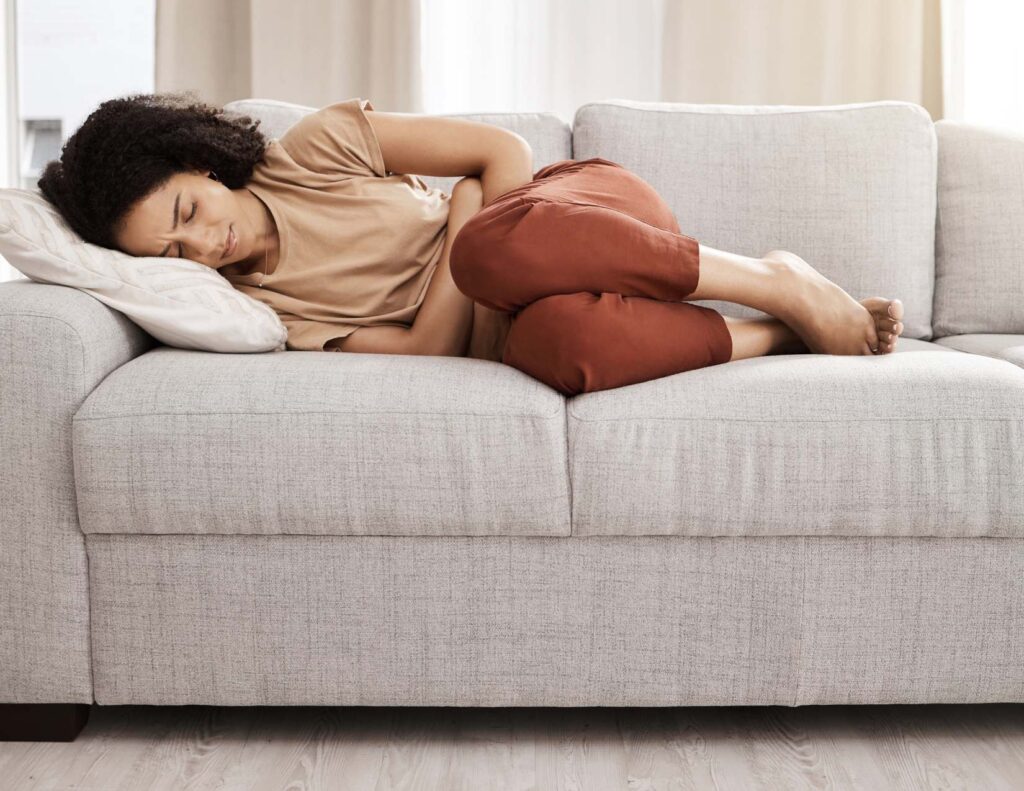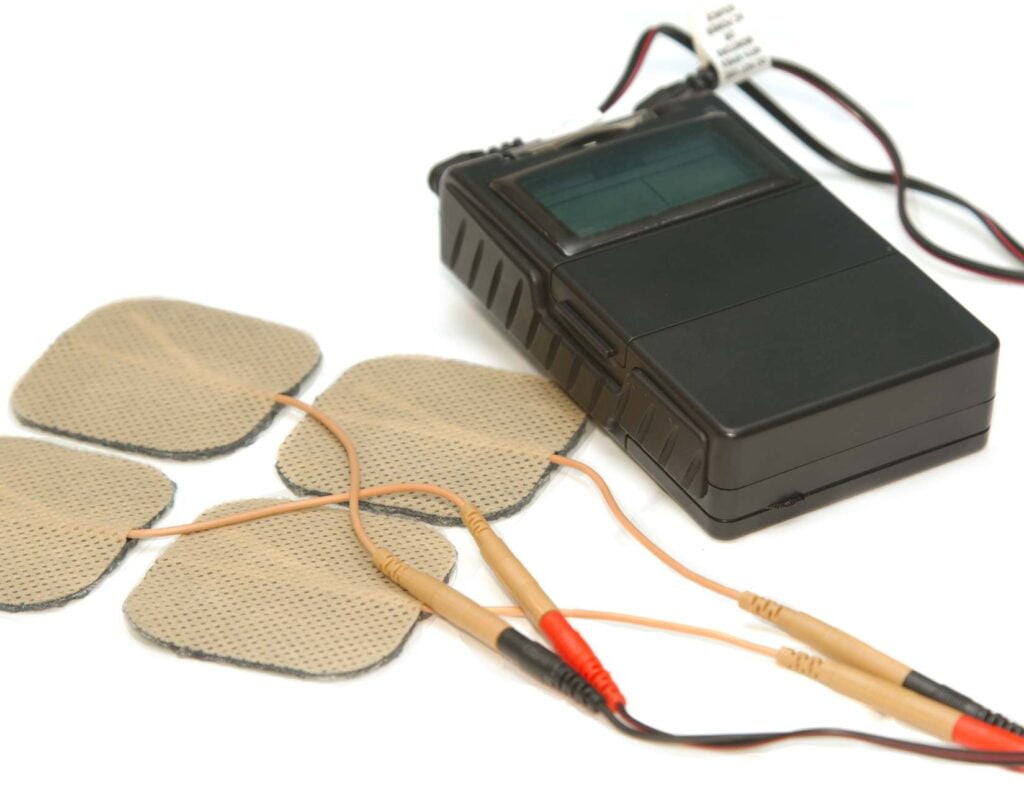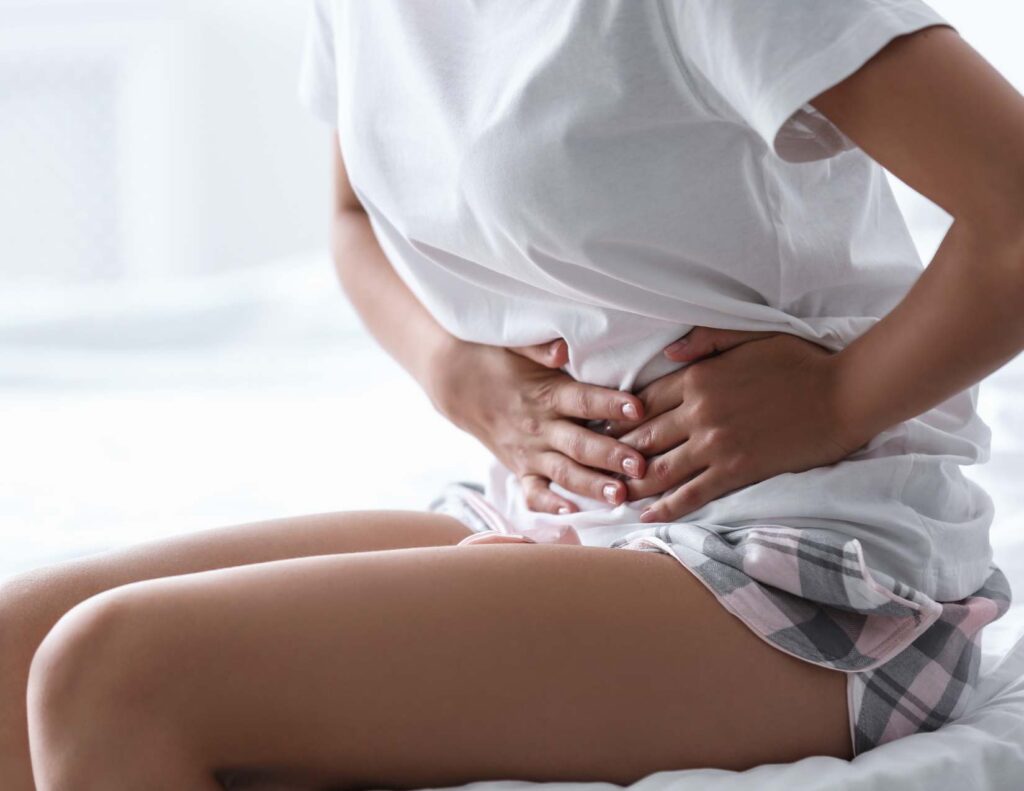Where to Put The Tens Unit for Menstrual Cramps
If you are one of the many women who suffer from cramps during your menstrual cycle, you might have tried a variety of remedies to ease your discomfort.
Painkillers, hot water bottles, and relaxation techniques can sometimes help, but for many women, these methods don’t provide enough relief. In your quest for a solution, you may have come across a device called a TENS (Transcutaneous Electrical Nerve Stimulation) unit.
This article will guide you on where to put the tens unit for menstrual cramps and how to use it effectively.
Table of Contents

Understanding a TENS Unit
A TENS unit is a small battery-operated device that uses mild electrical currents to relieve pain. It is connected to two or more electrodes, which are placed on the skin near the area of pain.
The device sends electrical pulses through the skin, which can help block pain signals from reaching the brain, providing a non-invasive, drug-free method of pain relief.
Electric stimulation has been proven to effectively reduce severe pain and improve quality of life. It has been shown to have analgesic effects, increase endorphin levels, reduce spasms, and relax uterine muscles.
Studies have also found that different electrical impulses can be used as an effective treatment for dysmenorrhea in combination with other forms of therapy such as exercise.
Electrical stimulation may also be used to help reduce menstrual cramps in women who cannot take traditional medications due to their side effects.
Additionally, electric stimulation has been found to have positive effects in treating ongoing and recurring pain from conditions such as fibromyalgia and interstitial cystitis.
Overall, electric stimulation is a safe and effective treatment for severe cramps and other forms of pelvic pain. It can be used alone or combined with other treatments to help provide relief and improve quality of life.

Understanding Menstrual Cramps and Period Pain
Menstrual cramps, or period pain, is a common condition that affects millions of women every month. It is caused by contractions in the uterus as it prepares to shed its lining.
These contractions can cause inflammation and severe abdominal and back pain, often accompanied by fatigue, nausea, and headache.
Primary dysmenorrhea, the medical term for menstrual cramps, can be treated with over-the-counter medications such as ibuprofen and naproxen.
But if these medications don’t provide relief, electric stimulation is a viable alternative that uses a mild electrical current to relieve pain. It is connected to two or more electrodes, which are placed on the skin near the area of pain.
When a current is applied, it helps to relax the uterine muscles and reduce inflammation.
Secondary dysmenorrhea is caused by underlying conditions such as endometriosis, fibroids, or pelvic inflammatory disease.
Treatment is typically more involved and may include medications to reduce inflammation or surgery to remove the source of pain.
In cases where severe cramping persists and does not respond to traditional treatments, electric stimulation can be used as a supplemental treatment for relief.
Benefits of Using a TENS Unit for Menstrual Cramps
TENS therapy has been used to relieve various types of pain, including:
- Menstrual cramps/Period cramps
- Pelvic pain caused by endometriosis
- Lower back pain/Sciatica
- Labor pain
- Fibromyalgia
- Arthritis/Joint Pain
- Sports injuries
When it comes to painful periods, using a TENS machine can be quite effective. It is non-invasive, safe, and comes with few or no side effects.
It has been used in the medical field for decades with this pain relief method. Many women have also reported significant relief from their menstrual pain when using a TENS unit.
Where to Put the TENS Unit for Menstrual Cramps
The placement of the electrode pads is crucial when using a TENS device for menstrual cramps.
Typically, you can place the electrodes on the lower abdomen or lower back, whichever is closer to the area where you feel the pain. Some women also find relief by placing electrodes on the inside of their thighs, near the waistline.
However, every woman is unique, and what works for one may not work for another. Therefore, you may need to experiment with different placements until you find the one that provides the most relief.

How to Use a TENS Unit for Menstrual Cramps
Step 1: Positioning the Electrodes
When you open your TENS unit, you’ll find a control unit connected to several wires. These wires are connected to adhesive gel pads known as electrodes, which will be placed on your skin.
To position the pads, start by placing one on either side of your lower back, abdomen, or the area of pain. If your device comes with four sticky pads, you can place the remaining two on the inside of each thigh, near the waistline.
Step 2: Adjusting the Intensity Levels
Once the pads are in place, turn on your device. Most TENS units come with a power button and an intensity dial.
Start with the lowest setting and gradually increase the intensity until you feel a comfortable tingling sensation. If the sensations become painful, reduce the intensity.
Step 3: Using the Device
After finding a comfortable setting, you can go about your day with the device in place. Most TENS units come with a built-in timer, so you don’t have to worry about overuse.
However, it’s important to check the device every 10-20 minutes to ensure the pads are still securely in place and the intensity level remains comfortable.
Step 4: Aftercare
Once you’re done using the TENS treatment, turn it off and remove the pads. Clean the areas where the pads were placed with mild soap and water, and pat dry.
You may also want to apply a moisturizer, as the TENS unit might cause the skin to become slightly dry.
Step 5: Charging and Maintenance
Most TENS units come with a rechargeable battery and charging cord. When the device is not in use, plug it in so it’s ready for the next use.
Most units have an indicator light that lets you know when it’s fully charged. When not in use, store your TENS unit in a dry, safe place.
Choosing the Right TENS Unit
There are many different types and brands of TENS units available. When choosing a device, consider your specific needs and pain relief goals. A portable device can be a good choice if you want to use it on the go.
Some units come with reusable pads that can be washed and reused, while others have disposable pads that need to be replaced after each use.
Safety Precautions
While TENS therapy is generally safe, there are a few precautions you should take. TENS therapy is not recommended in early pregnancy.
If you are pregnant or think you may be pregnant, talk to your healthcare provider before using a TENS unit.
Also, avoid using a TENS unit if you have a pacemaker, epilepsy, a heart condition, or a history of cancer in the last five years.
It is also important to note that while electric stimulation can be a great way to reduce pain, it should not replace traditional medical treatments such as medications or physical therapy.
Patients should always consult with their healthcare provider before beginning any treatment plan. By doing so, they can ensure that their course of treatment is tailored specifically for their needs.
Effectiveness of TENS Units for Menstrual Cramps
Research indicates that TENS therapy can be effective in relieving menstrual cramps.
Over 98% of women report reduced pain within 30 minutes of using a TENS unit. However, the duration of pain relief varies from person to person.
Some people report that their pain returns as soon as the device is turned off, while others continue to experience pain relief for up to 24 hours after the nerve stimulation has stopped.
Electric stimulation has also been used to treat other chronic pain conditions such as low back pain, sciatica, neck pain, migraines as well as conditions like fibromyalgia and interstitial cystitis.
In these cases, the electricity helps to block the transmission of painful signals from reaching the brain and can help relax tight muscles. By doing so, it can help reduce the frequency and intensity of flare-ups.
Additionally, electric stimulation can also help improve blood circulation and increase range of motion.
Most treatments involve a series of sessions that gradually increase in intensity over time to ensure that the patient is receiving optimal relief from their pain.
Patients may experience some local discomfort during treatment but this should subside as they become accustomed to the sensation.
After completing a series of treatments, patients often report a reduction in their pain symptoms and improved mobility.
Electric stimulation can provide considerable relief for those dealing with chronic pain and is an effective way to manage it.

Other Natural pain relief for menstrual cramps
In addition to TENS therapy, there are a variety of other natural remedies that may help relieve menstrual cramps. Some common treatments include:
• Massage – A massage can help reduce muscle tension and promote relaxation.
• Acupuncture – This traditional Chinese medicine practice uses tiny needles inserted into specific points on the body to stimulate energy flow.
• Heating pads – Applying heat to the lower abdomen or painful area is a great way to reduce cramping pain.
• Herbal remedies – Many herbs have been used traditionally for menstrual cramps, including ginger, fennel, and chamomile.
• Exercise – A light exercise regimen can help relax tense muscles and promote better circulation.
While many of these natural treatments may be helpful, it’s important to speak with your doctor before trying any of them. They can advise you on the best course of action for your particular situation.
Conclusion
Using a TENS unit for menstrual cramps can be a safe, effective, and non-invasive way to manage your discomfort. Understanding where to put tens unit for menstrual cramps and how to use it properly can help you get the most benefit from this therapy. Always consult your healthcare provider before starting any new pain management regimen.






